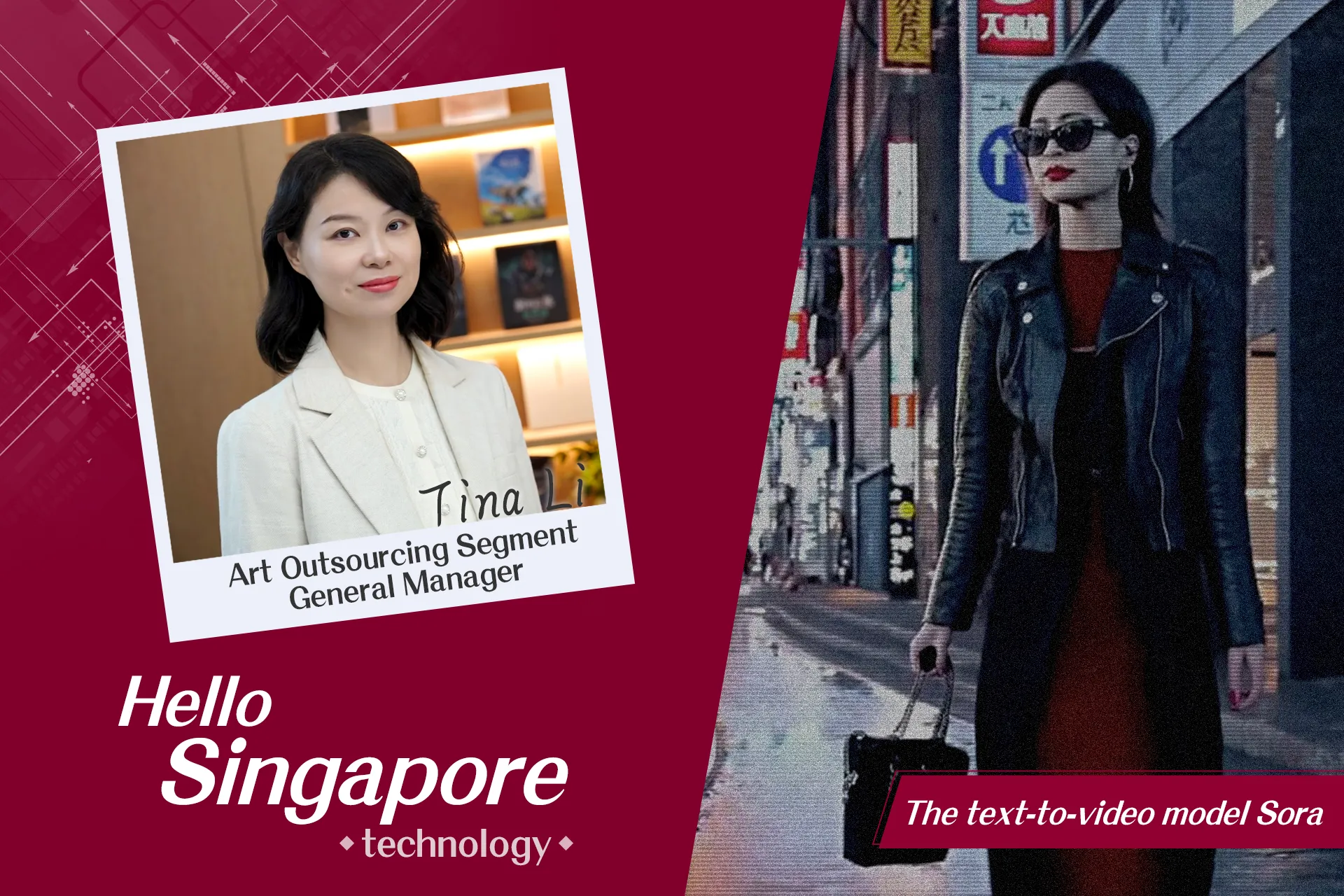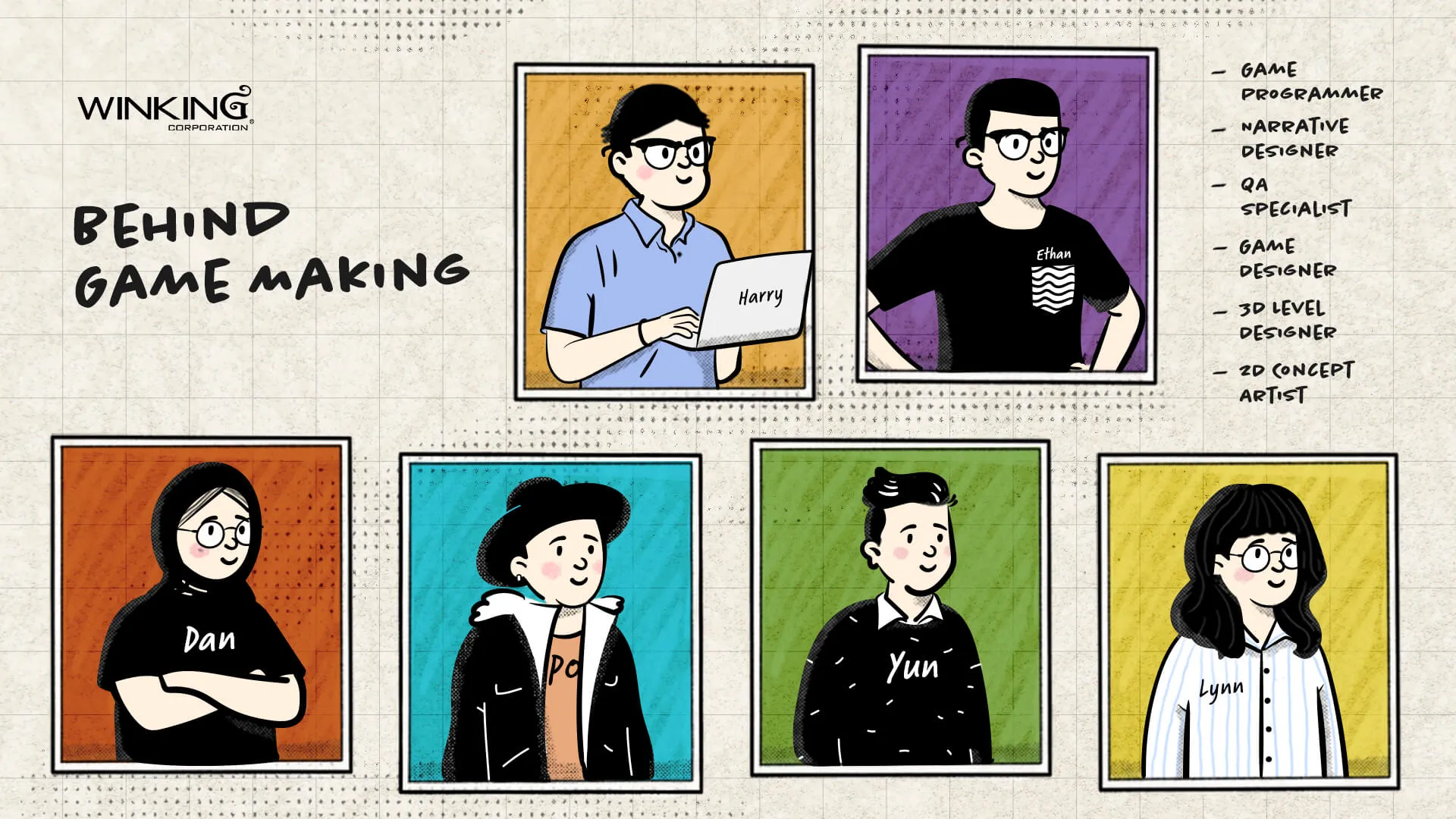Sora, launched by the globally leading artificial intelligence research and innovation institution OpenAI, is a disruptive generative artificial intelligence project. This groundbreaking technology has the capability to produce videos ranging from several seconds to a minute based solely on textual input from users. In doing so, Sora not only pushes the boundaries of digital content creation but also introduces novel possibilities for visual effects generation.

【Click to watch the interview content of Hello Singapore| Technology Insights】
However, amidst the technological upheaval sparked by Sora, a pertinent question emerges: How will this innovation impact the landscape of game art production? Is Sora poised to revolutionize the field, or does it present a potential threat to professionals in the gaming industry? Addressing these concerns, Tina Li, General Manager of the Art Outsourcing Segment at Winking Studios, recently shared her views in a recent Hello Singapore news broadcast.
“Hello Singapore” is a news program aired in Singapore, featuring guests from various sectors like business and technology to discuss current topics. Tina asserted that Winking Studios, as a major art outsourcing company, recognizes the prevalent use of 3D technology in global gaming. While tools like Sora can greatly aid creators in producing concept images and promotional videos for these 3D assets, it’s essential to note that the assets provided for gaming are vector-based, enabling real-time interaction in 360 degrees. Tools like Sora lack the capability to generate such assets, a crucial distinction to make. Moreover, Tina explained that unlike other industries, gaming products prioritize interactivity and user experience. Games offer players immersive experiences rather than passive viewing. Consequently, game production involves utilizing game engines to construct entire game worlds for players to explore and engage with. Just as real estate developers construct buildings through physical processes, game development entails creating assets that allow real-time interaction within the game environment. Therefore, while Sora can produce videos, it cannot substitute the fundamental workflow in game production.
The above 3D assets are created by Winking Studios for Ubisoft’s game, “Skull and Bones”
Tina elaborated that despite the promising potential of artificial intelligence in the gaming industry, it still encounters several challenges. Among these challenges is the limitation posed by AI-generated assets, which often lack a flexible structure for modification, thereby hindering precise customization by art production personnel. Furthermore, the issue of potential copyright infringement looms large over AI-generated content, as commercial usage may be prohibited without proper authorization for the training data. Consequently, many major game companies have policies prohibiting the use of AI tools by internal personnel or suppliers to mitigate legal risks. These factors collectively contribute to the limited adoption of AI in game content production at present, notwithstanding the emergence of innovative tools like Sora, which offer new creative possibilities. However, their tangible impact on the production of game art assets remains constrained.
Generative AI relies heavily on extensive training data to deliver satisfactory results to users. Currently, with the vast array of data available on the internet encompassing articles, images, and videos, AI tools excel in generating content within these domains post-training. However, in the realm of game 3D modeling, the limited availability of training data poses a challenge in producing diverse and expansive game environments.Despite numerous breakthrough algorithms attempting to address this data scarcity, AI applications in 3D modeling primarily serve as supportive and auxiliary tools. They aim to enhance the efficiency of art production rather than replace manual labor entirely. While some cutting-edge research papers introduce advanced technologies, the associated costs are often prohibitively high, and their commercial feasibility remains uncertain.Historically, certain groundbreaking technologies, such as supersonic aircraft or cloud gaming, have struggled to achieve widespread adoption over decades due to their lack of commercial viability. Similarly, the adoption of advanced AI technologies in 3D modeling may face similar challenges in the foreseeable future.
The above 3D assets are created by Winking Studios for Ubisoft’s game, “Skull and Bones”
Tina expressed our perspective that the evolution of generative AI appears to parallel the transformative era of the Industrial Revolution, particularly with the advent of the spinning machine. Just as factories lacking this technology were gradually phased out, the gaming industry is poised to weed out companies that resist AI integration. While some anticipate that AI will significantly lower game development expenses, our stance is that leading game companies and IPs will leverage AI to create games of superior quality and extended gameplay, thereby preserving their competitive edge. This strategic utilization of AI holds the promise of fostering greater opportunities within the gaming sector and enhancing the overall gaming experience for players.


